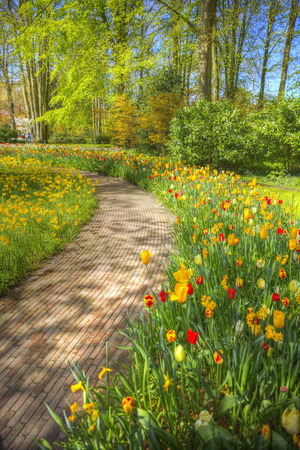Introduction to Rural Historic Villages
Britain’s countryside is a living tapestry of historic villages, each brimming with unique stories and timeless charm. Nestled amidst rolling hills, patchwork fields, and ancient woodlands, these rural gems offer more than just picturesque scenery—they provide a window into the nation’s rich heritage and enduring traditions. For families seeking an accessible day out, the tranquil lanes and footpaths weaving through these settlements invite gentle exploration at your own pace. Many of these routes are thoughtfully maintained, ensuring they are not only welcoming to visitors of all ages but also perfectly suited for those wishing to bring along their canine companions. Embarking on a historic village walk is more than a leisure activity; it is an opportunity to reconnect with Britain’s past, foster a spirit of adventure in young explorers, and experience the joy of shared discovery—paws included—in the heart of rural Britain.
2. Choosing the Perfect Village Walk
Exploring historic villages in rural Britain is a truly enriching experience, especially when you’re planning a family-friendly walk that welcomes your four-legged companions. The key to a memorable outing lies in selecting the right route—one that combines scenic beauty, accessibility for all ages and abilities, and a genuine dog-welcoming atmosphere. Below, you’ll find essential guidance on making the best choices, while respecting local customs and maximising available amenities.
Identifying Scenic and Accessible Routes
Britain’s countryside is dotted with public footpaths, bridleways, and permissive paths that meander through charming villages and rolling landscapes. When choosing your route, consider:
- Path Surface: Opt for well-maintained trails suitable for buggies or less mobile family members.
- Distance: Select walks that match your group’s stamina, factoring in rest stops and points of interest.
- Landmarks: Seek out routes that pass historic churches, village greens, or ancient inns to add cultural richness.
Dog-Welcoming Features to Look For
Not all village routes are created equal when it comes to canine companionship. To ensure a stress-free walk for both pets and people, look for:
- Stiles with Dog Gates: Many rural areas are updating stiles to include dog-friendly crossings.
- Water Points: Check if streams or water troughs are accessible along the way.
- Poo Bin Availability: Ensure there are bins provided for responsible waste disposal.
Footpath Etiquette in British Villages
Countryside etiquette is an integral part of rural life in the UK. Respecting these unwritten rules not only preserves the tranquillity of the area but also fosters good relations with local residents:
- Keep Dogs Under Control: Use leads near livestock and respect signposted requests regarding dogs off-lead.
- Stick to Marked Paths: Avoid straying into private fields or gardens.
- Acknowledge Locals: A friendly greeting goes a long way in small communities.
Village Amenities at a Glance
| Amenity | Description | Dog-Friendly? |
|---|---|---|
| Village Pub | Offers meals and refreshments; often features local ales. | Many welcome dogs inside or in beer gardens. |
| Café/Tea Room | Cosy spots for cream teas or sandwiches. | Select cafés provide water bowls and treats for dogs. |
| Public Toilets | Essential for families on longer walks. | N/A (but check for dog tie-up points outside). |
| Parking Areas | Sensible starting point for circular walks. | No restrictions, but check signage during busy seasons. |
Your Route Checklist
- Is the path accessible for all ages?
- Are there regular rest points and amenities?
- Does the route provide clear signposting?
- Are there facilities to support responsible dog ownership?
- Have you checked the weather and local notices before setting out?
The right preparation transforms a simple stroll into a cherished family memory—steeped in British tradition, natural beauty, and warm village hospitality.
![]()
3. Landmarks and Local Stories
As you traverse the charming paths of Britain’s historic villages, every step unveils a tapestry of remarkable landmarks and captivating local tales. These walks offer more than just picturesque scenery; they immerse your family—and your four-legged companions—in centuries of tradition, folklore, and architectural beauty.
Ancient Cottages with Character
The rural heartlands are dotted with quintessential thatched cottages, some dating back to the Tudor or even medieval periods. Their timber frames and stone walls tell silent stories of generations past. Many such cottages are still inhabited today, their gardens brimming with heritage roses and climbing ivy, offering a living link to Britain’s rural ancestry.
Historic Churches and Village Greens
No village walk is complete without passing the centuries-old parish church, often standing at the community’s core. These churches, with their Norman arches and weathered gravestones, serve as a testament to the enduring faith and resilience of local people. The adjacent village green—once the site of fairs, cricket matches, and communal gatherings—remains a cherished focal point for locals and visitors alike.
Unique Stories Along the Way
Each village boasts its own unique legends: from tales of highwaymen who once roamed ancient coaching routes, to stories of hidden tunnels used during times of conflict. Some walks pass by old mills powered by sparkling brooks, while others skirt manor houses reputedly visited by monarchs or famous poets. Friendly locals are often eager to share these anecdotes, adding richness and authenticity to your journey through rural Britain.
In essence, walking these family-friendly dog routes is not merely an outdoor pursuit—it is a living history lesson, where every lane and landmark invites you to pause and reflect on the enduring spirit of Britain’s countryside communities.
4. Dog-Friendly Facilities and Tips
Exploring the historic villages of rural Britain with your family and canine companion is a rewarding experience, but thoughtful preparation ensures everyone’s comfort and safety—including local wildlife and livestock. Below, we detail essential facilities and practical tips to help you navigate these beautiful routes responsibly.
Essential Dog Facilities Along Village Walks
| Facility | Availability | Remarks |
|---|---|---|
| Water Stations | Common at village greens, pubs, and popular starting points | Carry a portable bowl for stretches without amenities |
| Dog Waste Bins | Located at car parks, trailheads, and near village centres | Always bring spare bags; some remote paths lack bins |
| Leash Zones | Clearly signposted near farmland and nature reserves | Strict adherence protects livestock and ground-nesting birds |
| Dog-Friendly Pubs/Cafés | Scattered throughout most heritage villages | A welcome rest stop offering water bowls and treats |
Leash Policies: Respecting Local Rules and Wildlife
Many historic village walks pass through working farmland or conservation areas. In these locations, it is customary—and often required by law—to keep dogs on leads. This protects sheep, cattle, and ground-nesting birds from distress or harm. Even the friendliest dog can startle animals unaccustomed to canine visitors. Always check local signage for specific guidance, especially during lambing season (spring) or bird nesting periods (March–July).
Livestock Safety: A British Countryside Priority
The UK’s Countryside Code highlights the importance of leaving gates as found, keeping dogs under close control, and steering clear of grazing animals. Should you encounter livestock on your route:
- Keep dogs on a short lead.
- If cattle approach aggressively, release your dog for its safety.
- Never allow pets to chase or bark at farm animals.
- Avoid walking between cows and their calves.
Top Tips for a Safe and Enjoyable Walk
- Bring sufficient water for both people and pets—rural taps may be scarce.
- Pocket extra waste bags; take all rubbish home if bins are full or absent.
- Use reflective collars or leads in low light or misty weather for added visibility.
- Be considerate of other walkers—recall your dog promptly when approaching families or cyclists.
- If stopping at a pub or tearoom, confirm their pet policy in advance as rules vary by establishment.
The British countryside offers a warm welcome to responsible dog owners. By planning ahead and respecting local customs, you’ll ensure your family and four-legged friend enjoy every step of these historic village walks.
5. Pub Stops and Village Eateries
One of the great pleasures of historic village walks in rural Britain is the opportunity to pause at a traditional pub or tearoom along your route. These cherished local establishments are more than just places to refuel; they are vibrant hubs of village life, steeped in history and character. Most are family-run, offering a warm welcome not only to walkers but also to their four-legged companions.
The Quintessential British Pub Experience
Stepping into a country pub, you’ll often be greeted by the inviting aroma of hearty fare—think Sunday roasts, locally sourced pies, and freshly baked bread. Many pubs along popular walking routes have adapted to accommodate families with children’s menus, high chairs, and relaxed atmospheres. Dog-friendly policies are common: water bowls at the door, treats behind the bar, and cosy nooks where muddy paws are as welcome as wellington boots.
Village Tearooms: A Slice of Tradition
If you prefer a lighter stop, village tearooms offer an equally charming alternative. Here you can indulge in homemade cakes, scones with clotted cream and jam, and a proper pot of English tea. Tearoom owners often pride themselves on local ingredients and friendly service—making them ideal for families seeking a gentle rest and dogs needing a drink after a brisk walk.
Planning Your Pit Stops
When mapping out your route, take note of recommended pubs and cafes en route. Many provide outdoor seating or garden spaces perfect for energetic youngsters and curious canines alike. Some establishments even feature dog-friendly treats on their menu or dedicated play areas for children. A well-chosen pub or eatery stop transforms your walk into a full-day adventure—combining exercise, exploration, and the best of rural hospitality for all members of the family, paws included.
6. Seasonal Walk Recommendations
Insider Advice for the Ideal Walking Experience
Timing is everything when planning a successful historic village walk in rural Britain, particularly if you are accompanied by family and canine companions. The changing British seasons offer unique charms and considerations for each route, with local weather, events, and wildlife activity all playing a vital role in shaping your experience.
Spring: Awakening Countryside and Local Festivities
Spring is a delightful time to explore village routes as woodlands burst into life with bluebells and wild garlic. Paths such as those surrounding Lacock or Chipping Campden are especially picturesque, though it’s wise to bring waterproofs and sturdy footwear due to unpredictable showers. Many villages host traditional May Day celebrations—perfect for families seeking local colour. Be mindful of nesting birds; keep dogs on leads where required.
Summer: Vibrant Events and Extended Days
The longer daylight hours make summer ideal for full-day explorations. Routes through places like Castle Combe or the Yorkshire Dales offer lush scenery and warm weather, but these popular destinations can become busy during school holidays. Consider early morning or late afternoon walks to avoid crowds and midday heat for your dog’s comfort. Look out for village fetes, open gardens, and cricket matches that enhance the communal atmosphere.
Autumn: Tranquil Ambience and Natural Spectacles
Autumn provides a quieter walking experience as the countryside transforms into a tapestry of golds and reds. Village lanes near the Cotswolds or Northumberland become less crowded, making it an excellent period for reflective strolls. Keep an eye out for seasonal produce markets and harvest festivals. Check ahead for potential muddy patches after rainfall, especially if walking with children or older dogs.
Winter: Crisp Walks and Festive Cheer
While winter brings shorter days and colder temperatures, many routes take on a serene beauty—think frost-laden hedgerows in villages like Bibury or snow-dusted churchyards in the Peak District. Plan your walks during daylight hours, dress warmly, and consider routes close to welcoming pubs with open fires. Christmas markets and carol services often add festive spirit; however, be prepared for icy paths and keep dogs visible with reflective gear.
Local Knowledge Pays Dividends
Regardless of season, always check local forecasts before setting off and be aware of temporary path closures due to farming activities or events. Engaging with residents at village shops or tea rooms can reveal up-to-date advice on conditions and hidden highlights—an invaluable resource for ensuring your family-friendly dog walk is both safe and memorable throughout the year.


